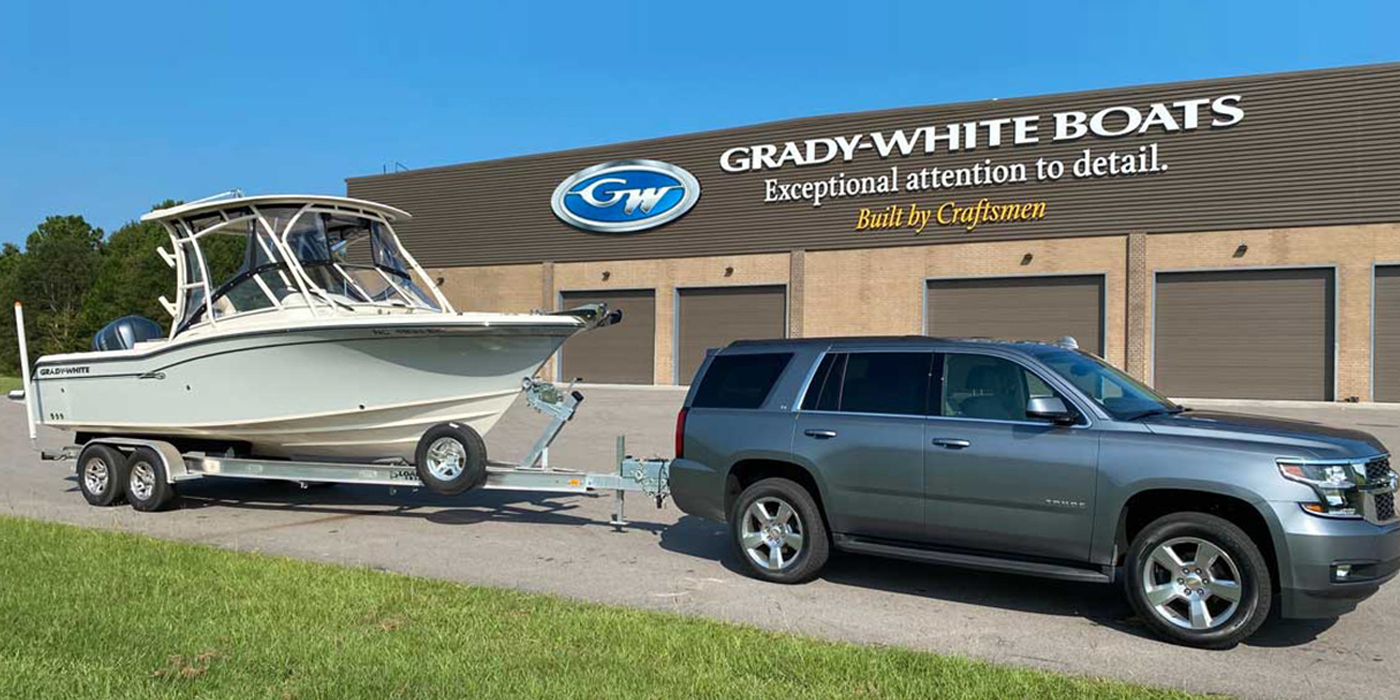All Articles
Boat Handling & Seamanship
Enjoying Your Day, Comfortably
Maintenance
Fishing
Dining Aboard
Trailering
Personal Touches
Performance & Efficiency
Ports of Call & Places to Anchor
All Years
2025
2024
2023
2022
2021
2020
2019
2018
2017
2016
2015
Trailering Safety
Having a great day on the water starts with a great trip to the dock if you trailer your boat. Before you head out with your boat and trailer, whether it be a short or long distance, here are some important things to consider.
First and foremost, if you have not trailered your boat before, you need to be sure your trailer is the right fit for your boat. Trailers have a weight rating, and it’s important to note that the weight is more than just the boat itself. You need to also take into account the weight of your motor, fuel, and all items you have placed on the boat.
You’ll also want to be sure you have the right vehicle for towing your boat and that the trailer hitch is properly installed. Be sure you have the appropriate cables installed for the trailer lights. Before driving off with your boat in tow, take the time to go through this Quick Reference Trailering Checklist.
If you don’t have experience trailering a boat, it’s a good idea to spend some time in an empty parking lot. You can use cones or milk jugs to practice turns and backing. Place the cones the same distance apart as the width of the boat ramp you’ll be using and back the boat between the cones. This is a safer way to practice than on the actual ramp where you can cause damage to your boat, trailer, vehicle, the ramp itself or someone else’s property. It’s also much easier to get a feel for the process without other boaters staring at you as they wait to launch their boat.
Remember that just like it takes longer to get up to speed with a boat behind your vehicle, it also takes longer to stop. It’s important not to follow too closely to the vehicle in front of you and allow extra distance and time than normal for stopping.
Another concern when pulling a boat is weight distribution. If the weight is too heavy in the back, it can cause the boat and trailer to fishtail (sway from side to side). If your boat and trailer start to fishtail, it is important to know not to put your foot on the brake, as this will cause the trailer to sway more and the momentum will begin to control the movement of the vehicle. In the event that your boat begins to fishtail, slowly take your foot off the gas pedal. Try not to move the steering wheel; just keep going straight. Once your speed reduces to about 35 mph, the swaying should subside, and you can safely pull off the side of the road and adjust the weight more to the front of the boat.
If you are trailering your boat across state lines, be sure you are familiar with the other state rules for trailering your boat. Most states require a special towing permit and may have restricted times you may travel with loads wider than 8'6". If your boat exceeds that limit, you can check with each state’s DMV to evaluate the laws and request the appropriate permits.
Having the flexibility to trailer your boat to different destinations can be fun, but the fun stops if you have an incident, so please be sure you take the time to go through the checklist before you leave. Each time you stop, take a few minutes to walk around the trailer for another quick check. This could save you from a lot of stress, as well as time and money.
